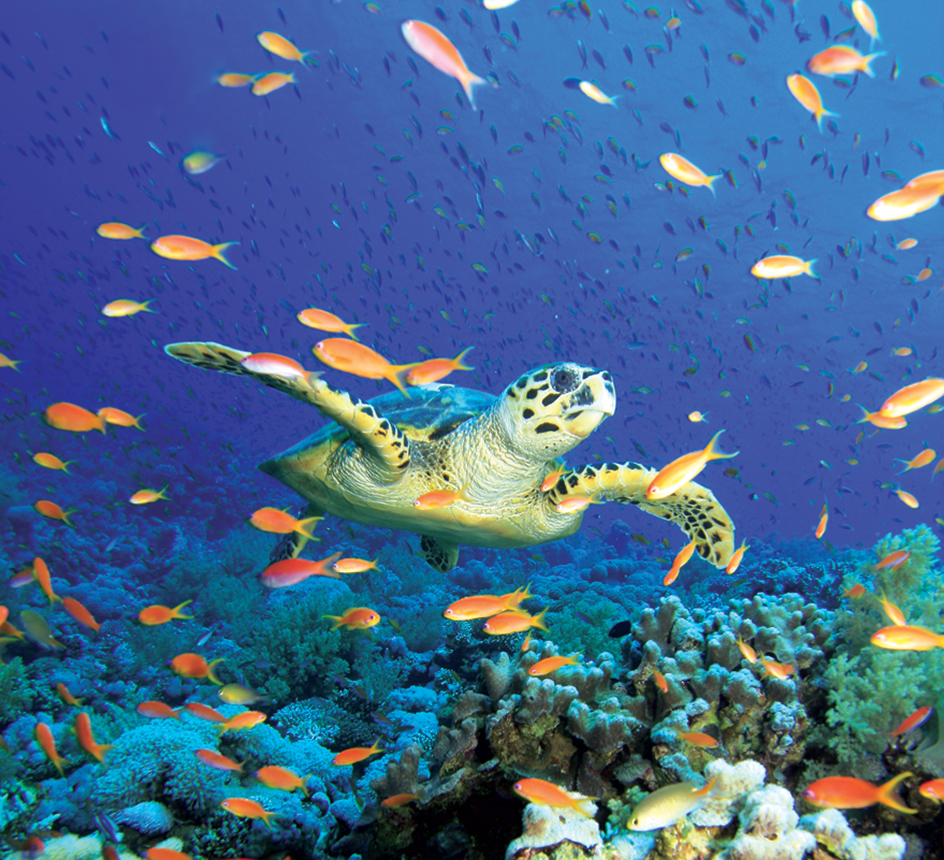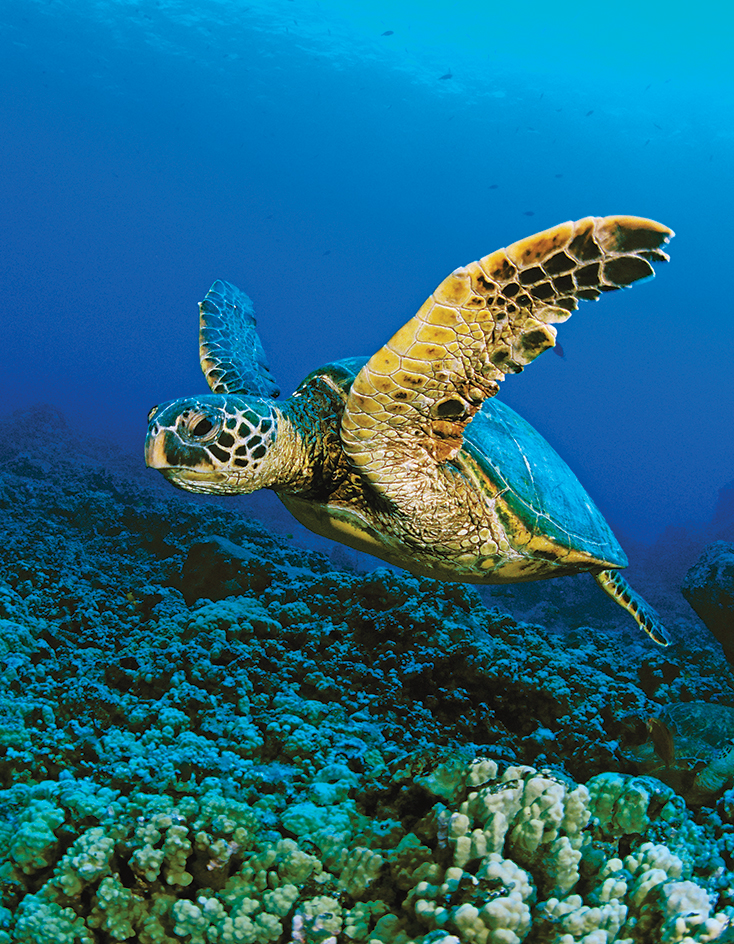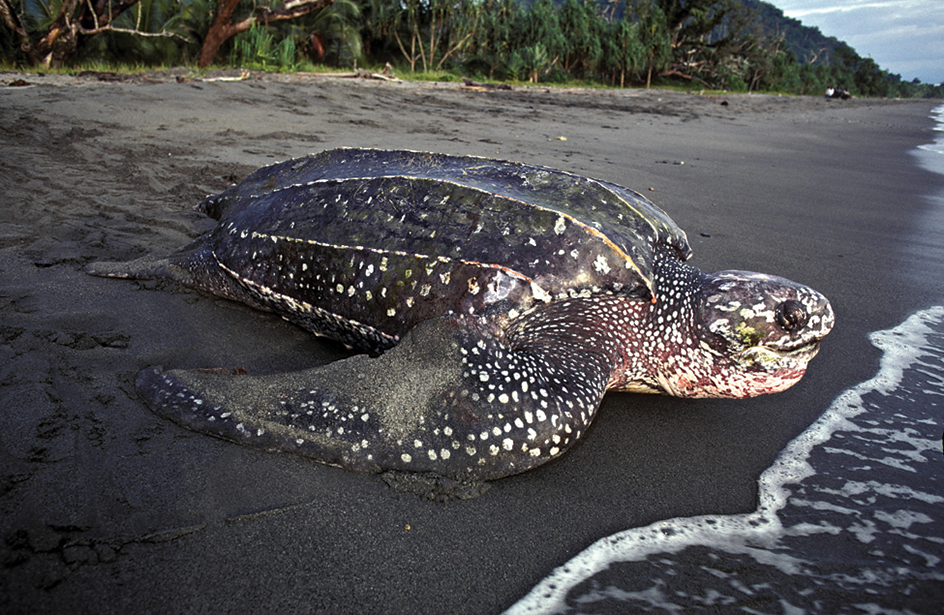Sea turtle is a large turtle that lives almost its entire life in the ocean. Sea turtles are born on land but quickly enter the water. Females normally return to land only to lay eggs. Most males never return to land. Sea turtles live throughout the world’s oceans, sometimes traveling thousands of miles or kilometers through the sea. Despite amazingly long journeys, most female sea turtles return to the beaches where they were born to lay their eggs.

Types.
Seven species (kinds) of sea turtles exist. The smallest species, the Kemp’s ridley (also called the Atlantic ridley), can grow about 28 inches (70 centimeters) long and weigh nearly 100 pounds (45 kilograms). The largest sea turtle, the leatherback, also ranks as the largest living turtle. It grows from 4 to 8 feet (1.2 to 2.4 meters) long and can weigh up to 2,000 pounds (900 kilograms). Unlike the shells of other sea turtles, which are bony and scaly, the leatherback’s shell has few bones and is mostly covered in leathery skin. The other species of sea turtles are the green turtle, the flatback, the hawksbill, the loggerhead, and the olive ridley (also called the Pacific ridley).
Loading the player...Green sea turtle
Most sea turtles live in warm parts of the ocean. Leatherbacks can also live in colder waters near Alaska, Canada, and Iceland. Sea turtles nest on many tropical and subtropical beaches throughout the world.
Reproduction.
A female sea turtle crawls onto the beach to lay her eggs, usually at night. She digs a nest in the sand with her hind flippers. There, she lays from about 50 to 100 leathery white eggs, covers the hole with sand, and then returns to the sea. Although sea turtles are capable swimmers, on land the female must drag her weight around with her fins and is virtually helpless.

Sea turtle eggs begin to hatch from 45 to 70 days after they are laid, depending mostly on the temperature of the sand. The hatchlings may take several days to dig their way up to the beach surface. They usually reach the surface at night and then quickly dash toward the water. Ocean currents carry them away from the shore, and some young sea turtles may find refuge in floating beds of seaweed.
The life of a sea turtle.
Sea turtle eggs and hatchlings face threats from many predators, including birds, crabs, dogs, foxes, insects, and raccoons. Hatchlings that do make it to the water can be easy prey for sea birds and fish. But as the turtles swim farther from shore and grow to adult size, they become much safer from predators.
Sea turtles are mostly omnivores—that is, they eat both plants and animals. Their diet includes algae and sea grasses as well as such animals as crabs, fish, and shrimp. Some kinds of sea turtles have more specialized diets. For example, some hawksbills eat mostly sponges. Leatherbacks chiefly eat jellyfish.

Scientists are not sure how long sea turtles live, but they may outlive humans. Females of some species may reach 35 or more years of age before reproducing.
Sea turtles and people.
There were once hundreds of millions of sea turtles, but humans have caused a massive decline in the world’s sea turtle population. People hunt sea turtles for their meat and eggs, and many of them die after becoming trapped in large nets of commercial fishing boats. Oil spills and litter pollute the oceans and causes health problems for sea turtles. Beach development can harm sea turtle nesting sites.
Loading the player...Swimming sea turtle
All sea turtles are protected by international convention, but trade in sea turtles and their products continues. People can help protect sea turtles by not disturbing nesting turtles and not handling sea turtle eggs.

